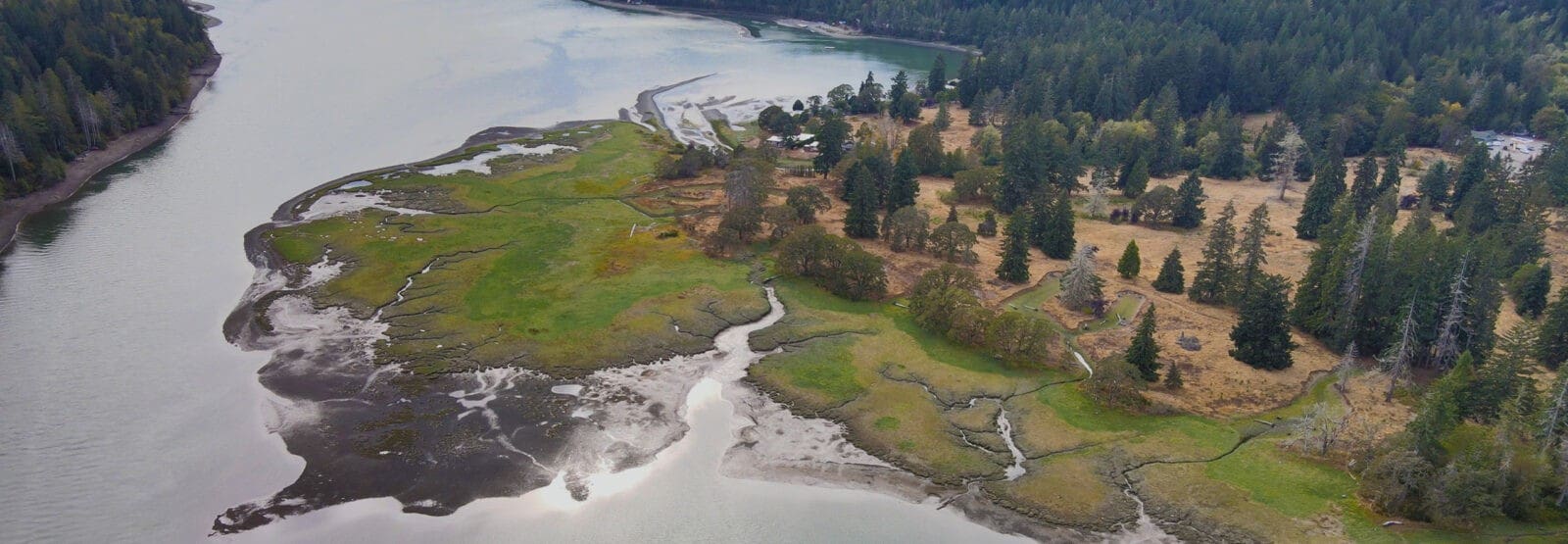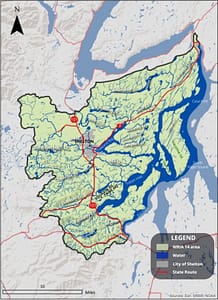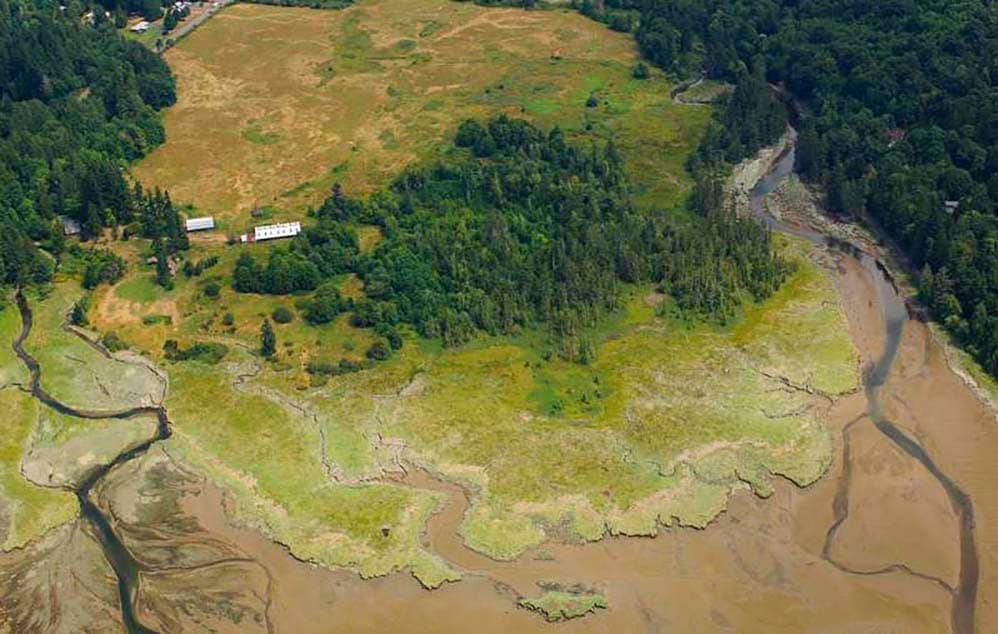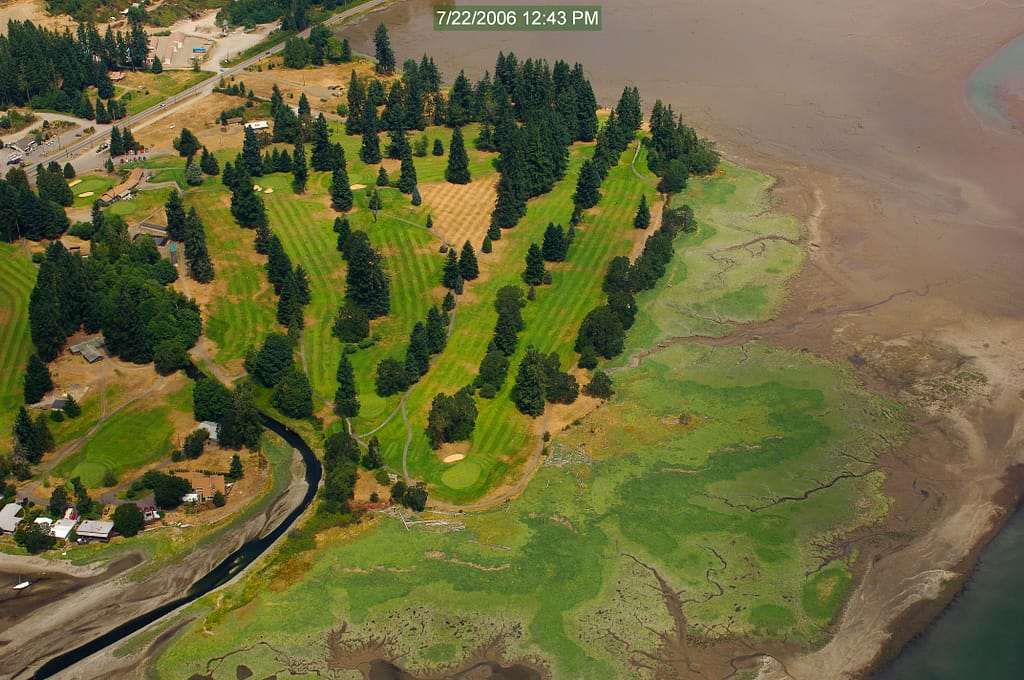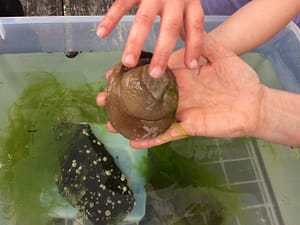Successful conservation projects usually don’t come to fruition from one entity working all alone. Projects are often complicated, lengthy, and technical. With the help of partners like Mason Conservation District, amazing conservation projects can continue to make a difference.
Capitol Land Trust (CLT) and Mason Conservation District’s partnership spans more than 15 years. Together, we have and continue to conserve critical habitat, restore the environment to a more functional state, and teach the next generation about conservation.
Mason Conservation District
Mason Conservation District (MCD) is a non-regulatory agency that has been helping landowners in Mason County responsibly and efficiently manage their land and associated natural resources. Since 1956, MCD staff have provided landowners with technical assistance and resources for the sustainable use, conservation, or restoration of natural resources in Mason County.
MCD is the Lead Entity Coordinator for Water Resource Inventory Area (WRIA) 14, also known as the Kennedy – Goldsborough Basin. WRIAs represent boundaries between large watersheds in Washington State. As WRIA 14’s Lead Entity Coordinator, MCD coordinates the salmon recovery effort in WRIA 14. MCD hosts monthly WRIA meetings, develops the 4-year annual workplan, and coordinates the annual Salmon Recovery Funding Board (SRFB) grant application process.
Under MCD’s leadership, the local community and experts work together to understand the needs of fish and make recommendations to the SRFB. The SRFB in turn funds habitat projects that help achieve salmon recovery in the WRIA, which then impact the larger South Puget Sound salmon recovery effort.
- WRIA 14. Click to enlarge image.
Our Partnership – Conservation & Restoration
Mason Conservation District has been integral in the success of two high-priority CLT projects within WRIA 14 along Oakland Bay — Twin Rivers Ranch Preserve and Bayshore Preserve.
Twin Rivers Ranch Preserve
Around 2009, MCD introduced CLT to the Rohde family who was, at the time, living at Twin Rivers Ranch at the head of Oakland Bay. At 133 acres, the property supports incredible salmon habitat like an unobstructed saltmarsh and shoreline, the lower portion of Cranberry and Deer creeks and their estuaries, and freshwater wetlands.
- Twin Rivers Ranch Preserve, Dept. of Ecology.
CLT purchased the property from the Rohde family in 2010 and renamed it Twin Rivers Ranch Preserve. With the technical and financial support of MCD, many habitat improvement projects have been carried out at the preserve including the removal of structures, replacing invasive plant species with native plants and the foundation removal of the craftsman-style house that has since been moved to Sequim.
One of the last remaining structures at the property was a failing bridge. The 55-foot-long bridge was the last remaining fish barrier on all 9.4 miles of Cranberry Creek. Cranberry Creek provides important habitat for coho salmon, from spawning beds along much of the creek to rearing habitat in the headwater wetlands. With the bridge removed fish can move freely upriver from the estuary, passing through an improved and unconstrained floodplain. Mason Conservation District provided financial and technical support to remove the bridge and shoreline armoring on Cranberry Creek.
- Bridge removal
MCD’s District Engineer, Katrinka Hibler, was instrumental in the bridge and shoreline armoring removal project, which also included the construction of a new road that allows us access the property. Katrinka took the lead on the design of the road, created a stormwater management plan, engineered plans for the bridge removal, and obtained the corresponding permits for the project. Ultimately, the bridge removal couldn’t have happened without their partnership.
“MCD has been such a great partner in our efforts to remove the last structures from the property. In addition to their generous funding, Katrinka’s engineering and design expertise allowed us to meet the technical requirements of the permitting agencies. We couldn’t have done this alone.”
Laurence Reeves, CLT Conservation Director
Bayshore Preserve
MCD was also instrumental in the restoration of a property just south of Twin Rivers Ranch Preserve, what we today call Bayshore Preserve. The 74-acre property was managed as a golf course for decades and encompasses undeveloped shoreline, the lower portion of Johns Creek and its estuary, and 27 acres of saltmarsh habitat.
- Basyhore Preserve, 2006. Dept. of Ecology.
When the area was conserved by CLT in 2014, MCD provided over $90,000 in local matching funds for our Washington Wildlife and Recreation Program (WWRP) restoration grant. MCD engineers designed and coordinated construction of seven tidal basins and multiple side channels along Johns Creek, and replated riparian vegetation along Johns Creek.
The tidal basins were built at Bayshore after the removal of a 1,400-foot supratidal dike, which kept incoming saltwater tides off golf course grass. For the first time in about 70 years, the upland portion of the property was reconnected to tidal inundation. The results include a 10.6% increase of additional flourishing saltmarsh habitat at Bayshore Preserve.
- Bayshore Preserve, 2020. Mike Melton
Streams are normally complex and dynamic systems but are often simplified by human modifications. In the case of Johns Creek, the stream lacked side channel habitat and large woody debris. Both of which support a food web that includes chum salmon. MCD engineered side channels and installed large woody debris along Johns Creek to restore its natural functions.
Chum salmon utilize Johns Creek each year to spawn and rear their young. Successful spawning and rearing of baby salmon requires special habitat features like specific gravel size, hiding places provided by large woody debris, and a good food supply provided by the surrounding vegetation and a healthy population of bugs living in the stream.
- 2015 side channel
- Johns Creek side channel in 2019
Today, Twin Rivers Ranch Preserve and Bayshore Preserve are much more connected to a larger ecosystem and can better function to meet the needs of salmon and people utilizing Oakland Bay.
Our Partnership – Community Outreach & Education
MCD’s critical role as a conservation partner doesn’t stop there! They facilitate many outdoor learning experiences for Shelton School District students at six different grade levels. To give you a look into what this is like, kindergarteners visit Twanoh State Park to learn how living things get what they need to survive; second graders explore the Skokomish estuary to observe the diversity of living and non-living things in different habitats; and fifth graders visit Cranberry Lake to learn how people use Earth’s resources, and explore solutions for how we can maintain a healthy environment at the same time.
- MCD’s outdoor learning experiences.
Early in 2020 CLT teamed up with MCD, Pacific Education Institute, and Shelton teachers to pilot a new outdoor STEM field experience for 6th grade students at CLT’s Hilburn Preserve. Unfortunately, COVID-19 had other ideas and schools shut down, preventing us from piloting the new program in the spring. However, the strength of our partnership is allowing us to pivot the program to work within current circumstances. We are currently in the planning process of providing both virtual and self-guided experiences at Hilburn Preserve for students and local families.
“Mason Conservation District is excited to share natural resource job skills that students can practice during their STEM outdoor field experiences. The kids learn about key industries in our community such as shellfish, forestry, and ecological restoration and can apply that knowledge for future work right here in Mason County.” Jen Thurman-Williams, MCD Environmental Specialist
Get Involved
An upcoming opportunity to get involved in the ongoing Bayshore restoration project happens October 17, 2020! Capitol Land Trust & Mason Conservation District are co-hosting a stewardship event for the third annual Orca Recovery Day at Bayshore Preserve. Learn more and sign up here!
Looking for some new plants for your home or project? MCD offers native plants and shrubs for low cost at their annual Native Plant Sale. Plant Sale orders will begin December 1st, 2020. If you would like to be added to their mailing list and receive their catalog subscribe here or at www.masoncd.org.
Many thanks to MCD for supporting the community in making environmentally friendly decisions and helping to implement projects so future generations can enjoy the land as much as we do. By sharing expertise, funding, and energy towards a common goal, partnerships like this one have amazing outcomes for local conservation. Thank you!
Written by Mary Birchem, CLT Outreach & Education Coordinator

